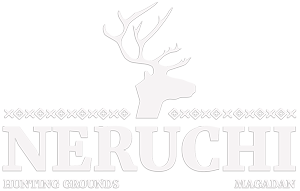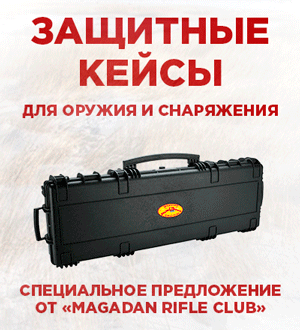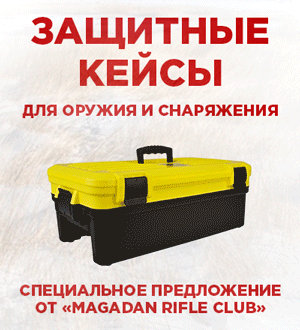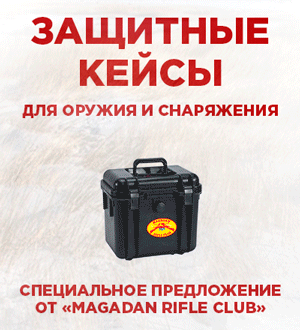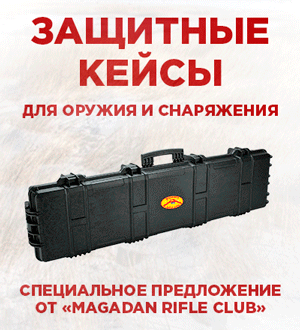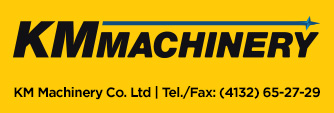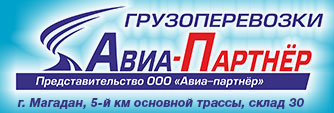Posted on December 11, 2017
Systems of layered clothing on the ECWCS
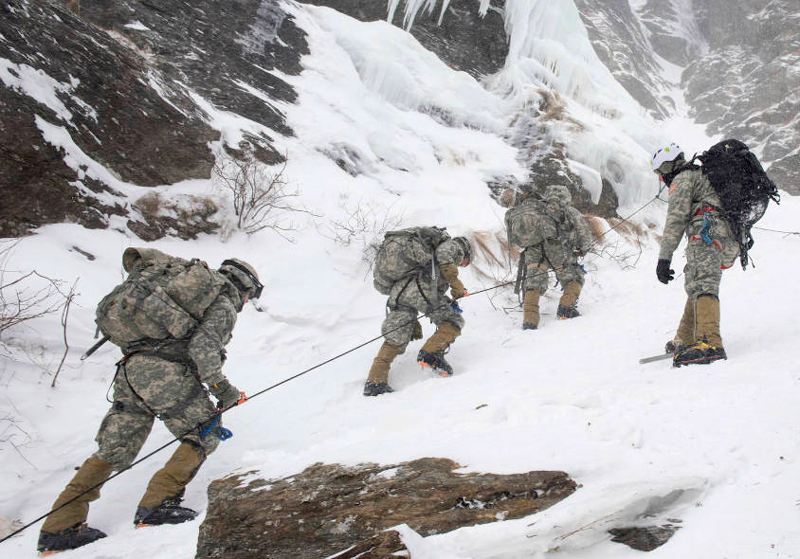
Adherents of the most popular types of outdoor activities – hunting, fishing and tourism, like no one else needs special clothing that best suits their beloved pastime. Such clothing should be protected from cold, wind, rain and fully consistent with the season of use.
Unfortunately, today not all manufacturers of clothes for fishing and hunting make their products taking into account the requirements of application and the wishes of potential users. Based on this, in the modern market there is a lot of low-functional and not very comfortable clothes, which should not be purchased. A good alternative to commercial models may be uniforms intended for the armed forces.
ECWCS GEN III
Since 1985 in the US Army there are all-season universal sets of clothing, whose name is denoted by the acronym ECWCS, or Extended Cold Weather Clothing System. It was during the development of the elements of this kit that the US military began to use new high-tech materials to create clothes and equipment, such as GoreTex, and later Polartec, Primaloft and others.
ECWCS is an “all-weather” system that includes several “levels” of clothing designed so that a person can protect themselves from aggressive weather phenomena over a wide range of temperatures (from +5 to -40 degrees). Simply put, having at your disposal a full set of ECWCS elements, you will be able to combine those that are necessary for the climate in which you are located. Today, the models of the ECWCS GEN III kit can be purchased in many specialized stores with goods for outdoor activities.
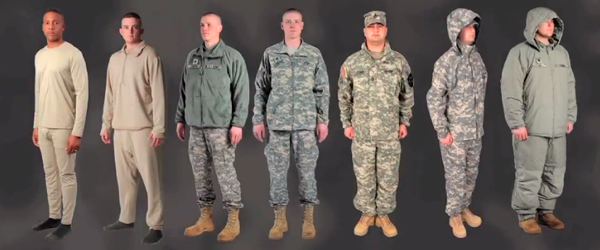
Initially, in the 80’s, the ECWCS army kit consisted of 5 layers, and it used things that were in the arsenal of the US Army before. But in the process of ECWCS evolution, the number of layers included in it increased to 7 and they all received a narrow specialization. To date, there are 3 generations of ECWCS. In short, they are all called GEN (from Eng.Generation). Each generation is an improved version of the previous one. In this article we will take a closer look at the ECWCS GEN III package.
“The system of clothes for combat operations in a wide temperature range of the third generation” or ECWCS GEN III appeared in the mid-2000s, and one of the main reasons that necessitated its development was the fighting in Afghanistan in 2001.
The climate in this country in different areas and at different heights can be very changeable. From damp or hot in the plains it easily passes into the cold and windy mountains. In such conditions, there was an acute need for a system of clothing consisting not simply of “layers”. It was necessary to create a universal “tool”, all the elements of which would allow a person to adapt as quickly as possible to weather change and feel comfortable in any conditions. At the same time, such a “designer” should have as little weight as possible and take up as little space as possible. Such a system was the set of the ECWCS GEN III uniform, which appeared in 2003.
Since 2004, ECWCS GEN III has used 10 mountain division and 82 airborne divisions, as well as some of the first it received air defense units located in Alaska. In autumn, winter and summer 2006-2007, GEN III ECWCS kits were tested in Afghanistan, and later they also began to supply parts deployed in South Korea, Bosnia and Kosovo.
The third-generation ECWCS system has 25% less weight and requires 33% less space than previous generation kits. The complete set consists of 7 layers and includes 12 things.
Interacting with each other, these things effectively remove moisture from the body, retain heat and prevent the ingress of cold and moisture inside, as well as fully perform the camouflage function in the terrain. But at the same time, each element of the ECWCS GEN III can work separately, as an independent thing. More layers of clothing, in comparison with the previous ECWCS kits, helps to fine-tune the climate as precisely as during active movement and in a static state.
Overview of ECWCS GEN III layers
Functionally, the layers can be divided as follows:
1.Natural moisture-absorbing underwear – 1 and 2 layers (L1 and L2).
2.Sohrenie heat (warming layers) – 3, 2 and 7 layer (L2, L3 and L7).
3. Protective functions (outer layers) – 3,4,5,6 and 7 layers (L3, L4, L5, L6, L7)
L1. Water separating. Native (light T-shirt and pants).
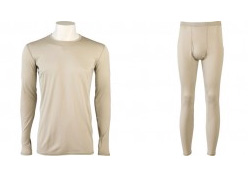 It can be used alone or in combination with other layers for additional heat protection and for draining moisture. Material: Polartec ® Power Dry ® Silkweight. It is characterized by very high air permeability, removes moisture from the skin and dries quickly, providing evaporative cooling in warm weather and thermal insulation in cool weather.
It can be used alone or in combination with other layers for additional heat protection and for draining moisture. Material: Polartec ® Power Dry ® Silkweight. It is characterized by very high air permeability, removes moisture from the skin and dries quickly, providing evaporative cooling in warm weather and thermal insulation in cool weather.
L2. Moisture-removing and warming. Native (medium-density jacket and pants).
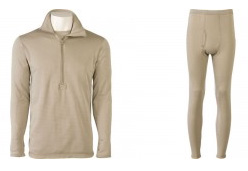
It can be used alone or in combination with other layers for additional heat protection and for draining moisture. Medium-density shirt and pants provide moisture retention in mild climate conditions and serve as a base layer in a cold climate. The Polartec ® Power Dry ® mesh material provides additional heat, and still dries quickly. Material – stretch for increased comfort and light weight.
L3. Warming and protective. Universal and outer (fleece jacket).
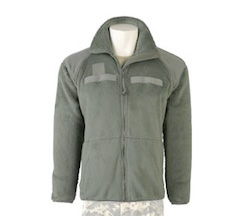
Worn under the upper layers or on top of the second layer as outerwear in a cool climate. The fleece jacket ECWCS GEN III High-Loft serves as the main insulation layer for warming in moderate and cold conditions. Material – Polartec® Thermal Pro® – creates in the pile “air bubbles” that retain and retain body heat, while the jacket is very light and has a small volume during transportation. Possesses air permeability, and also the jacket dries quickly.
L4. Protective. External (light jacket “windbreaker”).
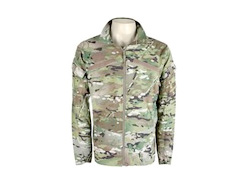
Designed to be worn with base layers in transient environments to provide protection from wind and sand. Jacket-windbreaker ECWCS Gen III is designed to protect against wind, but it has a small volume and weight. It optimizes the work of other insulation layers. Made of nylon with water resistant properties.
L5. Protective. External and universal (water-repellent light jacket and trousers).
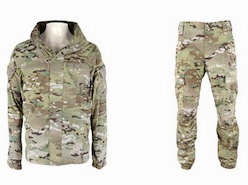
Soft Jacket for cold weather and trousers are designed for use in moderate and cold weather conditions in combination with other base and warming layers. Used are breathable and waterproof materials that can prevent wetting with a short moderate rain.
L6. Protective. External (waterproof Gore-Tex jacket and trousers).
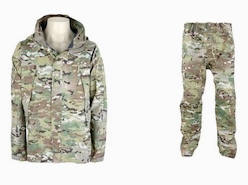
Designed for wearing in temperate and cold humid conditions with possible alternation of heat and cold changes. Used in combination with other base and warming layers. The sealed two-layer GORE-TEX® material provides lightness, full waterproofing, windproof and breathable properties. This layer is not universal, it needs to be worn over another outer layer, for example over the 5 layer.
L7. Warming and protective. Exterior (park and trousers).
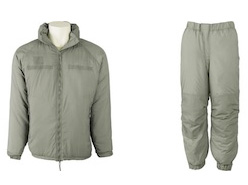
The external level of protection in the ECWCS complex, intended for use during operations in extreme cold and dry conditions. The outer fabric material has a waterproof finish. The filler PrimaLoft ® Sport is characterized by high thermal resistance to cold. It is characterized by high strength.
How to choose layers
In order to correctly choose the combination of layers for a particular situation, you must first answer 2 questions:
- What kind of weather (climate) is waiting for me? (it will be rainy weather in the summer in the tundra or cool and fresh in the mountains of the Caucasus).
- What will I do there? (sit all day with a fishing rod on the beach or run around in search of game).
It is important to remember that manufacturers give only recommendations, rather than strict requirements for a combination of layers. The temperature perception of each person is very individual, so you should decide on your own choosing clothing.
| Weather | Activity | Layer combinations |
| From +3 to +7. Cold. It’s very damp. Rain. Snow. | Low | L1 + L3 + L5 + L6 |
| +7 and more. Cool. It’s very damp. Rain. | Low | L1 + L4 + L5 + L6 |
| +7 and more. Cool. It’s very damp. Rain. | High | L1 + L4 + L5 |
| From +3 to +7. Cold. It’s very damp. Rain. Snow. | High | L1 +L5 |
| +3 to -18. Cold. Dry. Snow. | High | L1 +L2 + L5 |
| -18 to -45. Very cold. Snow, blizzard. | High | L2 + L5 + L7 |
| -18 to -45. Very cold. Snow, blizzard. | Low | L2 +L3 + L5 + L7 |
| +3 to -18. Cold. Dry. Snow. | Low | L2 + L3 (of necessity) + L5 + L7 |

